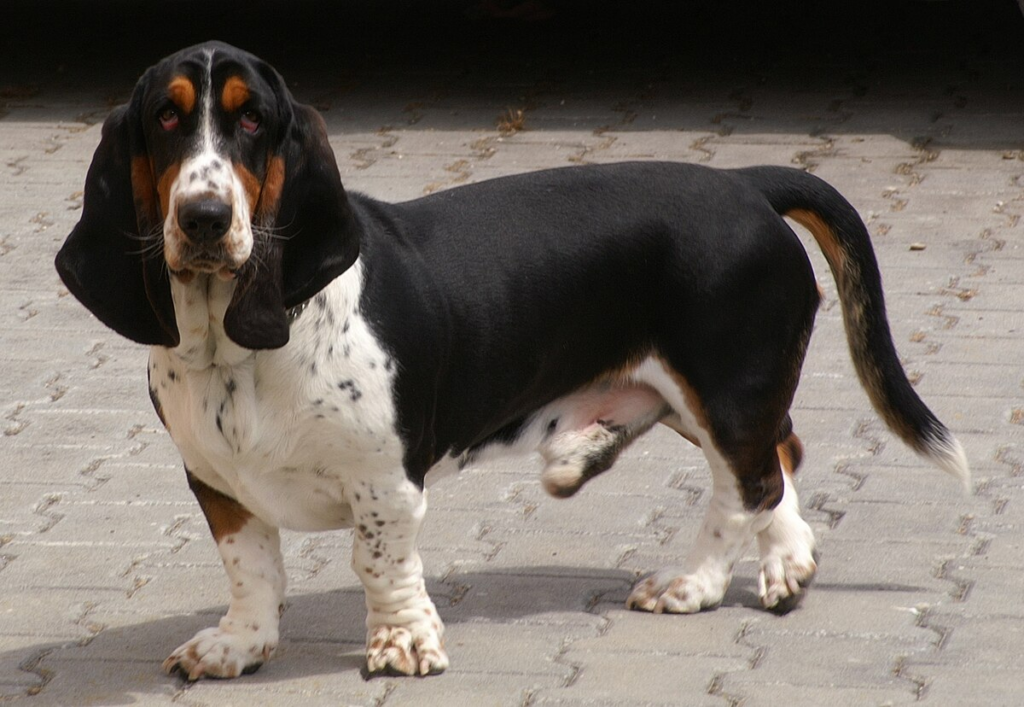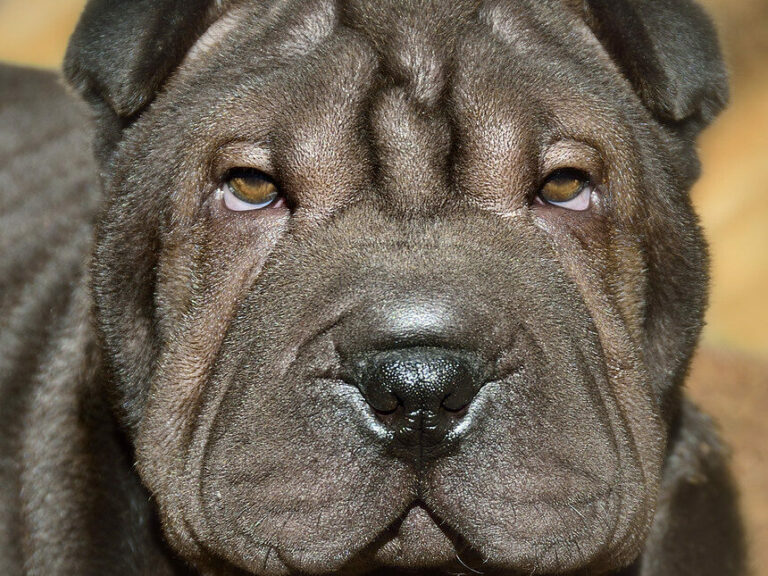Dog Breed Of The Day: Basset Hound

The Basset Hound is arguably one of the most recognizable breeds of all time. From gracing the front cover of the Times to appearing in popular classics like Smokey and the Bandit.
While the breed is certainly photogenic and familiar, they also made a name for themselves in an entirely different fashion. Hunting and scent tracking.
Then there’s that adorable and lovable appearance. Those droopy, long ears and hypnotic, puppy eyes will get you every time. Don’t forget about those short legs, long body, and loose folds of skin.
So what is it that compels so much admiration and love for this dog?
Here is what you need to know about the Basset Hound.
Basset Hound History
Well before Elvis went on the Steve Allen Show in 1956 and serenaded a Basset Hound wearing a fancy top hat, this breed was already winning the imaginations of many dog lovers.
According to many historians, the Basset goes back to the 6th century in France. The belief is that this breed descends from the St. Hubert hounds and the Basset Artesian Normand.
In the years following, this breed would appear on Egyptian tomb wall paintings around 2200 BC. Another theory has it that the Monks in France during the Middle Ages were breeding the Basset Hound as a hunter and companion.
The one constant is the important role the Hound would play during their hunting excursions. Aside from their signature appearance, the Basset Hound possesses an amazing ability to track and scent down smaller prey. Conversely, Bassets are second to their relative cousin, the Bloodhound, when it comes to the best senses using their nose.
Moreover, the Basset was the French version of the Cocker Spaniel, so to speak. Basset Hounds would show great willpower and motivation to drive small game out of their underworld holes. Prey such as hares and rabbits would succumb to the breed’s threats and leave their safe spaces. Unfortunately, for the hare or rabbit, a hunter would be waiting for the kill with a spear.
Everyone was a fan of the Basset Hound. In the work, The Art of Hunting, a book written by Jacques du Fouilloux, he describes a breed that is “legs low,” and “mighty of body.” Of course, many historians believe this pertains to the Basset Hound.
Basset Hound 19th Century and On
The 19th century would prove to be the most significant for this breed. First, Basset Hounds were mostly known as a dogs from France. Thanks to a show held in the country, visitors from England took an immediate interest in the breed.
In 1866, a pair of Basset Hound imports settled in England for the first time. Belle and Basset would mate and cross several times producing what many feel is today’s modern version of the breed. Lord Galway, was the man responsible for breeding the two and giving the breed its name.
The Kennel Club in Britain recognized the breed in 1880, which made it much easier for fans and future owners to follow the breed’s progress. Around the 1870s, a man by the name of Evert Millais began crossing the Basset with Bloodhounds for a different version of the breed. Many suspect that Millais’ work is responsible for the modern version of the Basset Hound.
It wouldn’t be long until the Basset Hound would discover America. The first imports likely landed in the U.S. around 1883. Two years later, along with an excellent class of breeds, the Basset was recognized by the American Kennel Club.
Both World War 1 and 2 nearly wiped the breed out of existence. There were only 9 Basset Hound registrations around 1918. The sentiment was so bad, that the Basset Hound Club of Britain decided to close in 1921. It would take 33 years for the club to open up its doors again.
However, thanks to the diligence of three Basset Hound enthusiasts, Edith Grew, Nina Elms, and Peggy Keevil, who were actively breeding Bassets back into existence, the breed would survive.
Moreover, the 1960s saw an explosion in Basset Hound registrations. From 1959 to 1964, over 1200 registrations took place, according to the Kennel Club.
Today, the breed still works tracking and at times herding in other places on Earth. Mostly, the 39th most popular breed in the AKC’s rankings enjoys an easier and quiet life as a companion dog.
Basset Hound Size
Basset Hounds belong to the medium breed group for size, according to the American Kennel Club. While it may be common to find most lurking around 15 inches, the standard is 12 to 15 inches.
This breed is prone to obesity and the AKC declares that a suitable weight for the Basset Hound is between 40 to 65 pounds.
Basset Hound Personality/Temperament
Although a Basset Hound can pick up training rather easily, due to their intelligence, they can often exhibit stubborn traits. This is easy to contend with when you use positive reinforcement by rewarding them with love, food, and moral encouragement.
The Basset loves to investigate and use its nose to track and roam about. They can wander off and are extremely friendly with strangers. One of their trademarks is howling, and often they will bark if they feel a threat is imminent.
Perfect breed for the novice dog owner. You don’t need to be an active person to own a Basset Hound. However, this doesn’t mean they don’t require exercise. On the contrary, due to their likeliness to inherit obesity problems, you should walk or play fetch with them regularly.
Charming and low-key, the Basset Hound loves to please and enjoys smaller children. They can be very patient with kids who may not know how to treat pets at first. However, you will want to supervise that relationship to ensure the safety of both parties. Bassets are fine alone and do well with other pets.
Finally, a Basset Hound is perfect off as an indoor pet, and you should never leave them outside. Especially in colder or extremely hot climates. This breed is much more suitable for temperate conditions.
Basset Hound Health
As written above, the Basset Hound is susceptible to issues like obesity, but if you regulate their diets as you should, the breed can live a relatively healthy life. The average life expectancy for the Basset is 12 to 13 years.
Basset Hounds seem to suffer from a couple of blood diseases. First, a bleeding disorder called, Thrombopathia, which causes excessive bleeding when there’s damage or rupturing, that occurs in the blood cells.
Second, von Willebrand’s Disease is a hereditary condition or blood disease, that causes constant bleeding. This breed is more prone to this disease than any other breed. The cause of this condition is a lack of clotting protein in the blood. Many breeds like the Rottweiler, Doberman, and German Shepherd seem to encounter VWD as well.
Another issue, which is one of the leading candidates to kill this breed is Bloat. Bloat or Gastric Dilatation Volvulus is common among dogs with deep chests like the Basset. GDV isn’t a huge deal for humans, but for dogs, it can result in death. The stomach is full of too much air, causing the stomach to twist or distend. Immediate treatment is necessary.
Elbow Dysplasia, which is more common with large dog breeds can cause lameness, pain, and discomfort. Hip Dysplasia can also be found with this breed. This is a malformation of the hip joint, which has nearly the same effects as Elbow Dysplasia.
Glaucoma and Patellar Luxation are other common health concerns to watch out for.
According to a UK Kennel Club survey in 2004, the following are the leading reasons for the breed’s death; Cancer at 31 percent, old age at 13 percent, Bloat at 11 percent, and Cardiac Arrest at 8 percent.
Basset Hound Care
A Basset Hound is much better off living in the country, especially considering the howling and barking. This doesn’t mean your dog will be a nuisance in an apartment, but generally speaking, Hounds are country dogs.
Because of their ability to acquire obesity and other health issues, you should require your Basset Hound to exercise daily and give them some type of mental stimulation. This will help prevent the dog from becoming bored and destructive.
Sweet and loving, if you raise your dog right as a pup, and give them early socialization, your Basset Hound will be great around children and smaller animals. They should be fine around strangers as well.
This is an indoor dog, that needs an area that is properly cordoned off. If you don’t have a fence, then think about investing in a leash.
Another problem affecting this breed is joint issues. You may need to set up a platform or even pick your Basset Hound up and down from higher surfaces. Also, make sure smaller children don’t play around with your dog’s legs. They are very sensitive.
Occasional baths, trim nails and check their long, droopy ears for infections regularly.
Basset Hound Feeding
If your Basset Hound is at 70 pounds and is an adult, it will require approximately 17000 plus calories per day. Of course, how much your dog eats has everything to do with how active they are. Also, their age, metabolism, and whether or not your dog is spayed or neutered come into consideration.
Most hounds need 18 to 22 percent protein, and 5 to 8 percent crude fat per day. Omega 3 and 6 fatty acids keep your Basset Hound’s coat, heart, and skin healthy. Chicken, turkey, lamb, and salmon are all great first ingredients in your Basset’s diet.
2 to 3 cups per day should suffice their daily dietary needs. In addition, your dog is better off when fed twice a day. Once in the morning and then again in the evening. This reduces the chances of bloat.
Finally, you should always give your Basset Hound fresh drinking water.
Basset Hound Coat
The coat of a Basset Hound is smooth, short, and hard with weather-resistant density. If you manage your Basset’s coat by grooming them regularly, you can help reduce the amount of shedding.
There are nine acceptable colors for the Basset hound’s coat. Black and white, black brown and white, black tan and white, black white and brown, black white and tan, brown black and white, lemon and white, mahogany and white, red and white. No markings can be found on the Basset Hound, according to the American Kennel Club’s standards.
Fun Basset Hound Facts
- Basset Hounds in 1885 would join one of the most dynamic AKC groups of recognition. A list that includes; Greyhound, Bloodhound, Bull Terrier, Dachshund, Pug, Saint Bernard and several others.
- The first U.S. President, George Washington, would receive a Basset from Marquis de la Fayette as a gift.
- Many Basset Hounds made the big time on television and in movies. A Basset Hound by the name of Flash appeared in the show, Dukes of Hazard.
- The show “Coach” features a Basset Hound as the companion to one of the leading characters.
- Shakespeare describes Basset Hounds in his work; “A Midsummer Night’s Dream.”
Closing Words
The Basset Hound will continue to grow in popularity, especially when people find out more and more about the breed. Their tracking talents and scenting skills are top-class.
Yet, it appears that the Basset Hound has found a role, in which they have settled in nicely. Their role is that of a fun-loving companion that will make families happy for years to come.





